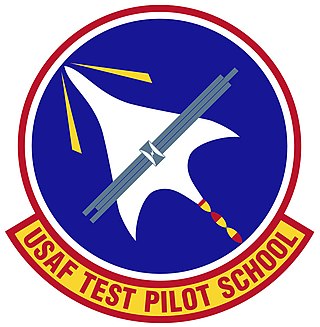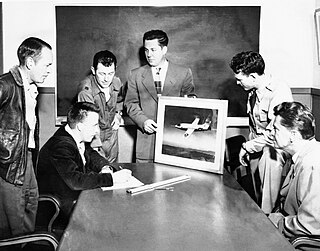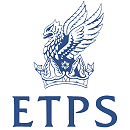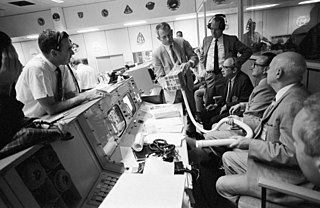A flight test engineer (FTE) is an engineer involved in the flight testing of prototype aircraft or aircraft systems.
A flight test engineer (FTE) is an engineer involved in the flight testing of prototype aircraft or aircraft systems.
The flight test engineer generally has overall responsibility for the planning of a specific flight test phase, which includes preparing the test plans in conjunction with other analytical and/or systems engineers, overseeing the buildup of the aircraft to the proper configuration, working with the flight test instrumentation engineer to ensure the sensors and recording systems are installed for required data parameters, and preparing the maneuver-by-maneuver plan for each test flight (enshrined typically in a higher level document called a "test plan" and then an operational document usually called the "test cards"). The FTE and the experimental test pilot are jointly responsible for the safety of the test flying. The FTE is also responsible for the overall analysis of the data acquired during a test flight. Finally, the flight test engineer will coordinate with specific analysis and/or systems engineers to write the final flight test report, documenting the results of a specific flight test phase.
The FTE may or may not fly on board the test aircraft, depending on the aircraft type or mission objectives. When not in the test aircraft, the FTE normally monitors the test in real-time via data transmitted to a special flight test data center. In this case, the FTE will be in radio contact with the test pilot along with the ground-based team, providing safety of flight monitoring and real-time data analysis.
Multiple test aircraft may be required on major aircraft development flight test programs. The test activities of all test aircraft must be coordinated by a senior flight test engineer. On complex test programs, it is also common for each test aircraft to have several FTEs assigned, each with a specific area of responsibility and testing.
Often a flight test engineer will be required to come up with techniques for monitoring a specific variable or system, which requires a bespoke piece of equipment to be fabricated. Owing to the specialized nature of the techniques in manufacturing and electronics involved, a flight test engineer is usually highly skilled and will have undergone in-depth training.
The flight test engineer may have a degree in aerospace engineering, mechanical engineering, electrical engineering or cognitive science. A bachelor's degree is generally required, and a master's degree is recommended. Many university aerospace engineering departments offer elective flight test courses for those interested in this field of engineering.
The military services have formal training programs for experimental flight test pilots and flight test engineers. These training programs may be attended by selected military or government-employed civilian pilots and engineers. Most military test pilot schools combine pilot and engineers in one class, where they work together just as they would in the real world.
Flight Test Schools:
A number of Flight Test Schools offer degrees in flight test engineering:
While not required, many FTEs are also civilian or military rated pilots. Although FTEs do not actively control the aircraft during tests, this flight background is valuable in understanding flight operations.

A flight simulator is a device that artificially re-creates aircraft flight and the environment in which it flies, for pilot training, design, or other purposes. It includes replicating the equations that govern how aircraft fly, how they react to applications of flight controls, the effects of other aircraft systems, and how the aircraft reacts to external factors such as air density, turbulence, wind shear, cloud, precipitation, etc. Flight simulation is used for a variety of reasons, including flight training, the design and development of the aircraft itself, and research into aircraft characteristics and control handling qualities.

The U.S. Air Force Test Pilot School is the Air Force's advanced flight training school that trains experimental test pilots, flight test engineers, and flight test navigators to carry out tests and evaluations of new aerospace weapon systems and also other aircraft of the U.S. Air Force. This school was established on 9 September 1944 as the Flight Test Training Unit at Wright-Patterson Air Force Base (AFB) in Dayton, Ohio. To take advantage of the uncongested skies, usually superb flying weather, and the lack of developed zones in the event of crashing, the test pilot school was officially moved to its present location at Edwards Air Force Base in the Mojave Desert of Southern California on 4 February 1951.

A test pilot is an aircraft pilot with additional training to fly and evaluate experimental, newly produced and modified aircraft with specific maneuvers, known as flight test techniques.

The Air Force Test Center (AFTC) is a development and test organization of the United States Air Force. It conducts research, development, test, and evaluation of aerospace systems from concept to deployment. It has test flown every aircraft in the Army Air Force's and the Air Force's inventory since World War II. The center employs nearly 13,000 people, and controls the second largest base in the Air Force.
Flight testing is a branch of aeronautical engineering that develops specialist equipment required for testing aircraft behaviour and systems. Instrumentation systems are developed using proprietary transducers and data acquisition systems. Data is sampled during the flight of an aircraft, or atmospheric testing of launch vehicles and reusable spacecraft. This data is validated for accuracy and analyzed before being passed to specialist engineering groups for further analysis to validate the design of the vehicle.

Colonel Jackie Lynwood Ridley was an aeronautical engineer, USAF test pilot and chief of the U.S. Air Force's Flight Test Engineering Laboratory. He helped develop and test many Cold War era military aircraft. He worked on the Bell X-1, the first aircraft to achieve supersonic flight. He was highly respected among fellow test pilots, most notably Chuck Yeager, for his engineering skills.
The Air Operations Branch is a personnel branch of the Canadian Forces (CF). All members of the branch wear air force uniform.

The Institut Supérieur de l'Aéronautique et de l'Espace is a French grande école of engineering, founded in 1909. It was the world's first dedicated aerospace engineering school and is considered to be the best in Europe in the field. The school delivers a range of science and engineering degree programs. ISAE-SUPAERO is part of University of Toulouse, ISSAT, PEGASUS, GEA, Toulouse Tech, CESAER and Aerospace Valley.
Alvin Swauger White was an American test pilot and mechanical engineer. He flew the maiden flights of both XB-70 Valkyrie aircraft, the first 2,000 mph (3,200 km/h) flight, and all subsequent Mach 3 exploration flights.

Kevin Anthony Ford is a retired United States Air Force Colonel and NASA astronaut. Ford has received a number of special honors and awards, some of which are the Air Force Meritorious Service Medal, Air Force Commendation Medal, Aerial Achievement Medal and the Armed Forces Expeditionary Medal. Ford has also logged more than 6,100 flying hours and also holds FAA certificates for airplanes, helicopters, gliders, and balloons. Ford has served in many roles at NASA since his selection in July 2000. The roles include as a Capsule Communicator or CAPCOM. He was also the Director Of Operations at the Gagarin Cosmonaut Training Center in Star City, Russia from January 2004 to January 2005. He was pilot of STS-128 and flight engineer 2 of Soyuz TMA-06M from October 23, 2012, to March 16, 2013. He served as ISS flight engineer for Expedition 33, and commander of Expedition 34.

The Empire Test Pilots' School (ETPS) is a British training school for test pilots and flight test engineers of fixed-wing and rotary-wing aircraft at MoD Boscombe Down in Wiltshire, England. It was established in 1943, the first of its type. The school moved to RAF Cranfield in October 1945, then to the Royal Aircraft Establishment, Farnborough in July 1947, before returning to Boscombe Down on 29 January 1968.

The National Test Pilot School (NTPS) is the only civilian test-pilot school in the United States, located in Mojave, California. It is organized as a not-for-profit educational institute under California state law and is governed by a board of trustees. NTPS is one of the seven test-pilot schools worldwide recognized by the international Society of Experimental Test Pilots, giving pilot graduates of NTPS instant initial acceptance into their society. In 2016, NTPS became the first test-pilot school in the world to be certified as a Flight Test Authorised Training Organisation by the European Aviation Safety Organization.
François Hussenot was a French engineer, credited with the invention of one of the early forms of the flight data recorder.

Bernard Ziegler was a French pilot and engineer, who served in Airbus as senior vice president for engineering, well known for his evangelical zeal for the application of the fly-by-wire system in the Airbuses. He was the son of Airbus founder Henri Ziegler.

The commanding officer of the U.S. Air Force Test Pilot School is known as its Commandant. The commandant manages the school which is a military unit that operates in a distinctly academic atmosphere. The position is usually held by a colonel selected by the Air Force Materiel Command (AFMC) commander although this authority may be delegated to the commander of the Air Force Flight Test Center (AFFTC). The commandant oversees all flying training, academic instruction, budgeting, and curriculum administration at the school. The commandant also chairs a board of officers that selects the school's students. The selection board consists of flight test squadron commanders with a majority of the board members being TPS graduates. The commandant determines enrollment requirements and associated schedules. Every three years, the commandant conducts a review of the school's curriculum with participation from flight test squadrons, the U.S. Naval TPS, and operational squadrons.

Aerospace engineering is the primary field of engineering concerned with the development of aircraft and spacecraft. It has two major and overlapping branches: aeronautical engineering and astronautical engineering. Avionics engineering is similar, but deals with the electronics side of aerospace engineering.

The Onizuka Prop Wash Award recognizes the student at the United States Air Force Test Pilot School who contributed most to class spirit and morale. The honoree from each class is selected by his or her fellow students rather than by school faculty. The award is named in memory of TPS graduate Ellison Onizuka who perished in the explosion of the Space Shuttle Challenger in 1986.

Colonel Noel Zamot is a retired United States Air Force officer who was the first Hispanic Commandant of the Air Force's elite Test Pilot School. Zamot is a former combat and test aviator with over 1900 hours in B-52, B-1B, B-2A, F-16D and over 20 other aircraft. He created the first system for testing complex military systems in contested cyberspace for the United States. Zamot is also the founder of Corvus Analytics, a consulting firm which helps its clients to design and develop cyber resiliency for complex systems.

The International Test Pilots School Canada located in London, Ontario, is one of the eight test pilot schools recognized globally by the international Society of Experimental Test Pilots and the Society of Flight Test Engineers. The school trains test pilots and flight test engineers. It is the first civilian test pilot school in Canada. ITPS Canada is registered as an Authorized Training Organization by the European Aviation Safety Agency. It shares some facilities with and neighbours the Jet Aircraft Museum at London International Airport.